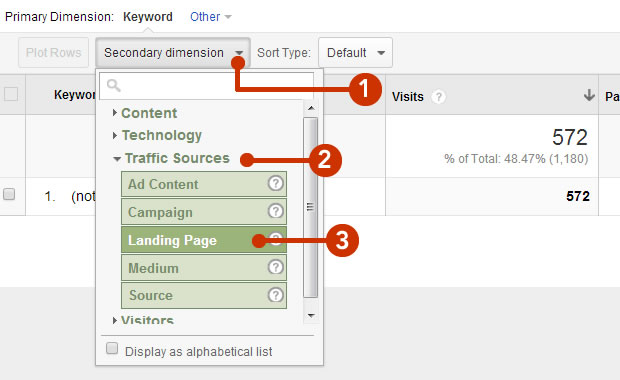Take Full Advantage Of Reporting Precision With Additional Measurement in Google Analytics
Understanding exactly how to maximize reporting accuracy with additional measurements in Google Analytics can dramatically improve the deepness of understandings derived from data analysis. By incorporating secondary measurements purposefully, marketing professionals can discover surprise patterns and connections that may not be quickly evident when analyzing primary metrics alone.
Understanding Second Measurements in Google Analytics
To boost information evaluation and gain deeper insights right into customer habits, recognizing secondary measurements in Google Analytics is essential. Secondary measurements enable users to section and better study data beyond the key measurement picked. By integrating secondary measurements, experts can refine their records to expose more detailed details regarding user communications on an internet site. For example, while the main dimension might display the complete number of web page sights, including an additional dimension such as 'source/medium' can give insights into where the website traffic originated from. This added layer of info makes it possible for marketers to examine the performance of different marketing campaigns or networks in driving traffic to the web site.
Moreover, comprehending second measurements is essential for producing extra customized reports customized to details business goals. By choosing the appropriate combination of main and additional dimensions, analysts can uncover patterns, fads, and correlations that may or else continue to be hidden. This nuanced approach to data evaluation encourages organizations to make informed decisions based on an extensive understanding of individual habits throughout different measurements.

How to Apply Additional Measurements
When leveraging second dimensions in Google Analytics, the useful application involves picking certain data parameters to more fine-tune insights past the main dimension's extent. To use additional dimensions successfully, begin by accessing the record or dataset where you want to delve deeper into the information. Keep in mind that secondary measurements assist provide context and granularity to your key dimension information, enabling you to extract even more significant and workable understandings from your Google Analytics reports.
Leveraging Secondary Measurements for Insights
Utilizing additional dimensions in Google Analytics permits for a much more extensive evaluation of data, supplying important understandings beyond the main dimension's scope. By leveraging additional measurements, users can dive deeper right into the efficiency metrics of their site or application, discovering covert patterns and patterns that might not be quickly noticeable when only checking out primary dimensions.
One secret advantage of utilizing second measurements is the ability to segment and filter information extra precisely. This can assist online marketers and analysts much better recognize the behavior of particular customer segments, such as new visitors versus returning visitors, or web traffic originating from various geographic places.
Furthermore, click secondary dimensions enable individuals to compare and contrast different information factors within the same report, offering a much more alternative view of performance (Secondary Dimension in Google Analytics). For instance, pairing the primary dimension of touchdown web pages with second measurements like demographics or gadgets can expose which pages are most effective in engaging customers on various tools or from various market teams.
Fundamentally, leveraging secondary measurements in Google Analytics equips users to remove richer understandings from their data, causing more enlightened decision-making and inevitably, enhanced performance.
Finest Practices for Additional Dimensions
When evaluating information in Google Analytics, integrating secondary measurements properly improves the depth of understandings originated from the primary metrics. To make one of the most out of additional dimensions, it is crucial to stick to best practices that make certain purposeful and accurate reporting. It is crucial to select additional dimensions that line up with the primary statistics you are analyzing. Selecting relevant additional measurements helps in offering context and a more clear understanding of the data being checked out.
In addition, it is recommended to limit the number of secondary measurements made use of in a solitary record to avoid overwhelming the analysis with way too much info. Concentrating on a couple of key secondary dimensions each time can lead to more focused and actionable understandings. Furthermore, take into consideration experimenting with different combinations of main and additional measurements to discover special fads and patterns that might not appear when taking a look at the information alone.
Advanced Analysis Methods With Additional Dimensions
Checking out complex data connections through the tactical application of secondary dimensions can unveil nuanced insights that elevate the deepness of evaluation in Google Analytics. By incorporating second measurements with key data collections, sophisticated analysis techniques can be employed to remove beneficial info. One such method is friend analysis, where secondary dimensions why not find out more permit for the division of individuals right into groups sharing typical features. This approach allows a deeper understanding of user habits patterns in time, aiding in the recognition of trends and the assessment of advertising and marketing projects' effectiveness.
Moreover, secondary dimensions can improve the evaluation of conversion paths by giving extra context. Understanding the different touchpoints a user engages with prior to converting can be crucial in enhancing the consumer journey - Secondary Dimension in Google Analytics. By using second measurements to dive into specifics such as web traffic resources or devices utilized, marketers can customize strategies to target high-converting channels successfully
Conclusion

To boost data analysis and gain much deeper understandings right into user habits, understanding additional measurements in Google Analytics is necessary - Secondary Dimension in Google Analytics. Additional measurements permit users to section and better dissect data beyond the key measurement selected. While the main measurement might display the total number of page sights, including a secondary dimension such as 'source/medium' can offer understandings into where the web traffic originated from.When leveraging second measurements in Google Analytics, the sensible application entails selecting specific information parameters to further refine insights beyond the primary measurement's scope. Remember i was reading this that secondary dimensions assist supply context and granularity to your key measurement information, allowing you to draw out more workable and significant understandings from your Google Analytics reports
Comments on “Maximizing SEO with Secondary Dimension in Google Analytics”